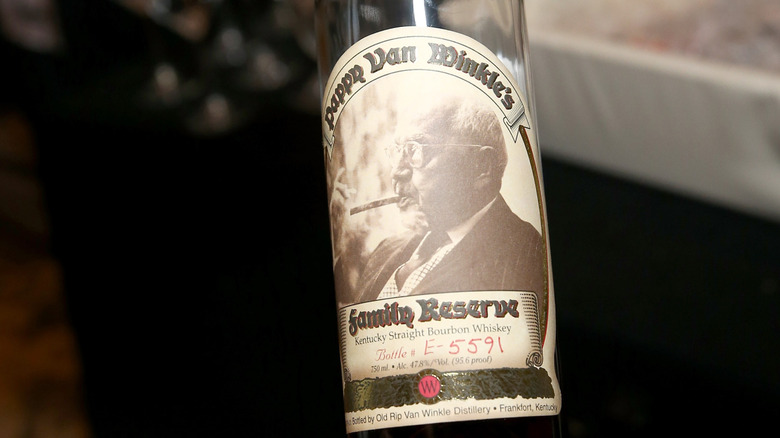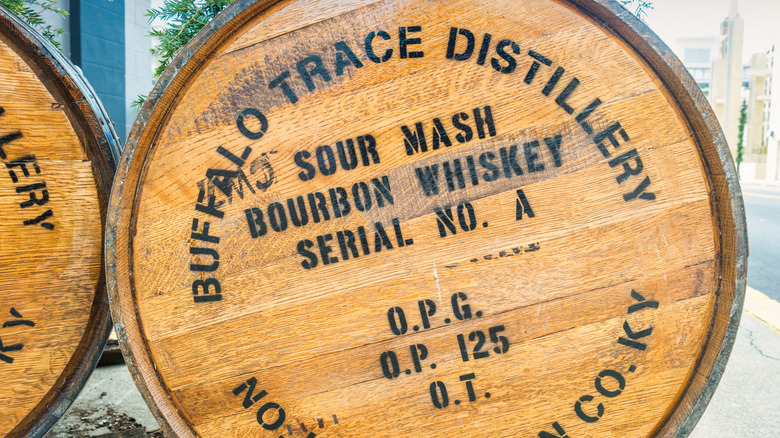These Affordable Bourbons Are Comparable To Pappy Van Winkle And A Fraction Of The Price
If you're a whiskey drinker, perhaps you've heard of Pappy Van Winkle bourbon. If you're an extremely wealthy drinker, maybe you've spent $1,000 or more to DoorDash a bottle of the stuff to your home. For the rest of us, it's a bourbon that isn't really worth buying — especially when there are much more affordable substitutes.
For some expert advice on that matter, we spoke to Chris Tunstall, the co-founder and chief of brand and product development of A Bar Above. Tunstall says that you should look for a wheated bourbon where the usual rye has been replaced with wheat in the mash, explaining, "Let's start by acknowledging the obvious: Pappy Van Winkle is more myth than bottle at this point. But if you're chasing that wheated bourbon profile without draining your kid's college fund, reach for Weller 12 Year, Weller Special Reserve, Old Fitzgerald Bottled-In-Bond, Elijah Craig Barrel Proof, or even Eagle Rare."
In all of those bottles, you're getting "those hallmark soft, rounded caramel and vanilla notes," according to Tunstall. Those first two Weller bourbons should taste the closest, because they both come from the Buffalo Trace Distillery in Kentucky, and they use the same mash bill (referring to the combo of grains used to make it). The Weller 12 Year and Special Reserve batches simply aren't aged for quite as long, making them the "little brothers" of fancy old Pappy.
The best wheated bourbon substitutes for Pappy Van Winkle
Now, your next question might be the same as my next question: if Pappy and Weller are so similar, why does the former cost a grand while a bottle of Weller Special Reserve can cost less than $100? When we asked Chris Tunstall if they genuinely taste the same, his answer was, "Yes-ish." According to Tunstall, the fact that Weller lacks the same complexity can be a big deal to aficionados. He said, "To some, [Weller] lacks the depth and nuance that comes with long-term aging in ideal warehouse conditions compared to its elder counterpart."
Part of the issue is that Pappy's aging period is unusually long, considering that most bourbons have an absolute minimum aging period of two years, and most distillers don't keep 200 bottles of bourbon in a single barrel for more than four to eight years before selling it. Tunstall said all that extra time matters, and noted, "Pappy spends 15+ years in barrel, and that's a lifetime in whiskey terms. You can't fake that level of oak integration, depth, or complexity. Most affordable bourbons ... simply haven't had the time to evolve into anything resembling Pappy's layered, velvety structure."
Still, unless you've developed an extraordinarily sensitive palate, a Pappy alternative still makes for a cheap bourbon that's actually worth buying. Each of Tunstall's suggestions lend strong flavors which make them well-suited to drinking neat; your best bet for a Pappy-like experience, since Tunstall believes that any mixers, or even ice, will dilute that prized bourbon flavor.

